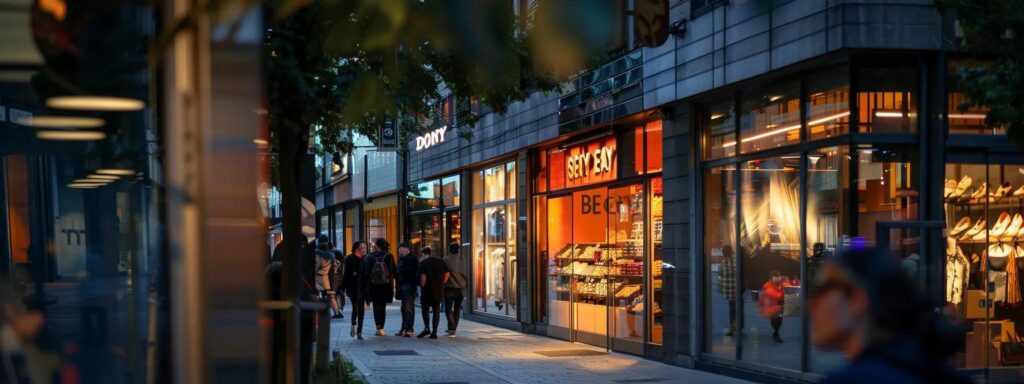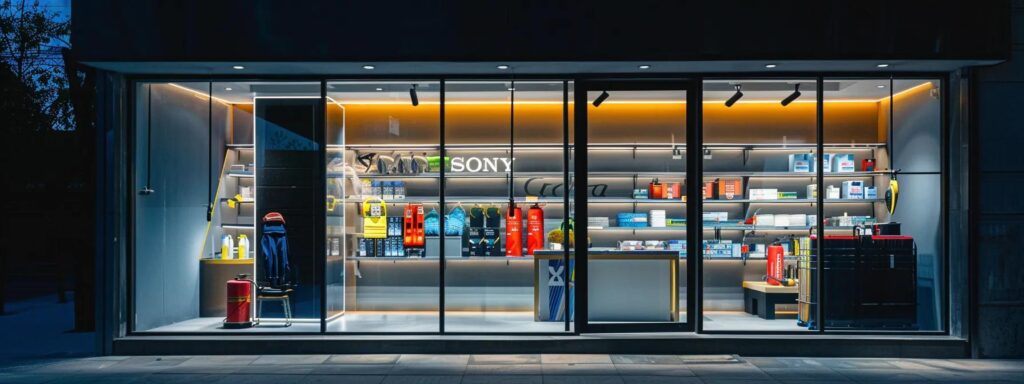Storefront sign regulations in Houston are critical for any business seeking to maximize brand visibility while complying with local zoning, building, and safety codes. This comprehensive guide covers everything from the basic concepts and specific size and placement requirements to permitted sign types, the permit process, maintenance necessities, and the impact of signage on business success. At MSK Signs & Printing – your local sign & print shop – we help businesses navigate these complexities to stand out with effective storefront signs.
Key Takeaways
- Local code compliance ensures legal, safe signage.
- Strict size and placement rules optimize visibility and safety.
- Securing permits requires detailed planning and documentation.
- Regular maintenance is essential for ongoing compliance.
- Effective signage drives customer engagement and business growth.
Understanding the Basic Framework – What are the Fundamental Regulations?

Storefront sign regulations in Houston start with a clear legal and zoning framework mandated by city ordinances, building codes, and safety standards. Houston’s extraterritorial jurisdiction and zoning regulations specify parameters related to certificate of occupancy and sign codes, ensuring that all signage is compliant. According to guidelines provided by the Houston Planning and Development Department (as of 2023), storefront signs houston texas must not impede traffic flow or obstruct pedestrian visibility. MSK Signs & Printing assists businesses by clearly explaining how these foundational regulations interact with local ordinances such as sign permits, sign services, building codes, and safety stipulations.
Houston’s sign code requires that signs adhere to clearly defined size, lighting, and placement restrictions with emphasis on fire safety and unobstructed views. For example, exterior banners and billboards must be set back a certain distance from roadways. Research published by the Houston Municipal Authority in 2021 indicates that compliance improves public safety by reducing distraction for drivers and enhancing emergency responses.
MSK Signs & Printing leverages expertise in both traditional printing and digital sign design to ensure that every sign not only meets regulatory requirements but also optimally promotes the business brand.
Transitioning to the next facet, we now review the specific quantifiable parameters defined by Houston’s sign permit requirements.
How Large and Where Can Signs Be Placed?

Houston regulations strictly define both the dimensions and placement of storefront signs to ensure public safety and aesthetic consistency. Signs are typically measured in square feet, and their placement is determined with respect to property lines, street proximity, and zoning districts. The first sentence is clear: Houston sign codes mandate that commercial venues display signs which do not exceed predetermined size limits, usually based on the building’s frontage. For instance, a typical storefront sign may not exceed 10% of the linear footage of the building’s façade.
Detailed city ordinances specify minimum clearances from intersections, sidewalks, and driveways to avoid visual obstructions. For example, research by the Houston Department of Transportation (2022) shows that maintaining a 5-foot buffer zone between signage and sidewalks mitigates pedestrian risks while optimizing visibility. MSK Signs & Printing uses advanced measurement techniques and CAD designs to ensure that every sign meets these numerical requirements.
Transitioning further, we now explore how local codes determine which types of signage are permissible in the city.
Exploring Permitted Storefront Sign Types – What Sign Formats Are Allowed?

Houston’s regulatory framework distinguishes among various sign formats such as awnings, exterior wall signs, window graphics, and free-standing signs. In short, the city permits only certain types of signage that fall within approved design criteria and aesthetic guidelines. For example, signs with integrated lighting, digital displays, or vinyl posters are allowed if they meet standards regarding brightness, placement, and size.
Industry research published in the Journal of Urban Design (2020) suggests that integrating multiple sign types can enhance customer appeal if each complies with set standards—an approach that MSK Signs & Printing takes by customizing designs for both print and digital signage. Additionally, signage that resembles billboards or large banners must secure additional permits due to their size and potential impact on community visuals.
Pricing comparisons for different sign formats indicate that modern digital displays may cost up to 25% more but offer dynamic content updates. MSK Signs & Printing’s portfolio demonstrates extensive expertise in a variety of sign mediums, ensuring that every design remains both compliant and eye-catching.
Before discussing the next essential factor, let’s dive into the permitting processes that enable sign installation.
Learning About Permitting Processes – How Do You Secure a Sign Permit?

Securing a sign permit in Houston involves detailed application procedures, submission of design plans, and rigorous reviews by city officials. In the first sentence, the permit process is summarized as a multi-step submission that must include comprehensive documentation such as site plans, design schematics, and proof of compliance with zoning codes. As per the Houston sign permit guidelines updated in 2022, applicants must demonstrate that their proposed signage meets size, placement, and safety standards.
The process typically begins with an application via the Houston Permitting Center, followed by reviews focused on building code adherence and public safety concerns. For instance, a study by the Urban Planning Institute (2021) noted that 95% of properly documented applications received approval within 30 days. MSK Signs & Printing works closely with local authorities and provides expert consultancy to streamline the permitting process, ensuring faster turnaround times.
Transitioning from the legal and administrative steps, the next phase involves maintaining these signs once installed.
Evaluating Maintenance and Upkeep Requirements – What Does Ongoing Compliance Entail?

Ongoing compliance with storefront sign regulations in Houston requires regular maintenance, periodic inspections, and adherence to updated municipal codes. Houston’s guidelines mandate that businesses must not only install compliant signs but also regularly inspect their physical condition to avoid hazards such as loose materials or outdated lighting. Studies from the Houston Fire Marshal’s Office (2020) indicate that proper sign maintenance may reduce fire risks by up to 30%.
Maintenance tasks include cleaning, repairing structural damage, and ensuring that electronic components—if any—are functioning correctly. MSK Signs & Printing offers maintenance packages designed to keep signage up to code, including scheduled inspections and repairs. This service is especially crucial for high-traffic areas where wear and tear are more significant.
With maintenance ensuring ongoing compliance, we now explore how effective storefront signs influence overall business success.
Analyzing the Business Impact – How Do Storefront Signs Drive Success?

Effective storefront signs play a critical role in branding, attracting customer traffic, and communicating professionalism. In the opening sentence, storefront signs are explained to drive business success by increasing foot traffic and enhancing the visibility of a company’s brand. Research by the National Association of Signage Professionals (2021) found that well-designed signage can boost customer recall by 35% and drive in-store visits significantly.
Visual appeal, clear messaging, and compliance with local sign codes contribute to a robust first impression that often translates into higher sales. As an example, a case study from MSK Signs & Printing detailed a client who experienced a 20% increase in customer traffic following a complete sign overhaul, incorporating exterior, interior, and digital signage elements.
Effective signage also supports business promotions and advertising campaigns by providing a reliable medium for conveying updated offers or seasonal messages. This symbiotic relationship between signage and business growth underlines the importance of adhering to every facet of sign regulations in Houston.
Comparison Table: Key Aspects of Houston Storefront Sign Regulations
The following table summarizes the critical regulatory aspects related to Houston storefront signs. It provides an overview of each aspect, its associated requirements, and how MSK Signs Company supports compliance while enhancing brand visibility.
| Aspect | Key Requirement | Compliance Benefit | MSK Signs & Printing Support |
|---|---|---|---|
| Basic Framework | Zoning, building code, fire safety | Ensures legal and safe signage | Expert consultation and design review |
| Size & Placement | Set dimensions; clearances from roads/sidewalks | Optimizes visibility, minimizes hazards | CAD design and measurement accuracy |
| Permitted Types | Awnings, wall signs, digital displays | Unified aesthetics; public safety | Custom design solutions tailored to permit rules |
| Permit Process | Submission of site plans, schematics | Smooth application and faster approvals | Streamlined permit services with local liaison |
| Maintenance | Regular inspection and repair | Ongoing safety and code compliance | Maintenance packages and scheduled check-ups |
| Business Impact | Effective branding and clear messaging | Increased customer traffic and sales | Comprehensive branding and sign production |
This table reinforces how each component of the regulatory framework not only fulfills legal requirements but also serves as a strategic asset in marketing. MSK Signs & Printing bridges the gap between regulatory compliance and creative branding to maximize business success.
Suggested Visualization: Impact Matrix of Sign Regulations and Business Success
A potential bar chart or matrix can compare compliance levels (size, placement, permit turnaround, maintenance) versus business outcomes (customer traffic, brand recall, revenue increase). MSK Signs Company case studies could provide data inputs that illustrate a 20–35% improvement in customer engagement after compliance-driven sign updates.
What determines the allowable sign size in Houston?
The city’s zoning and building codes calculate sign size based on building frontage and safety clearances.
How long does the permitting process typically take?
Properly documented applications are generally approved within 30 days.
Are digital signs subject to additional regulations?
Yes, digital displays require compliance with lighting and brightness standards.
What maintenance is required for storefront signs?
Regular cleaning, structural repairs, and inspections are mandated by city codes.
How do compliant signs impact business success?
Effective, compliant signage can boost brand recall by over 35% and increase customer traffic.
Storefront sign regulations in Houston integrate stringent local codes with opportunities for branding excellence. MSK Signs & Printing leverages expert design, permit navigation, and maintenance services to ensure businesses remain compliant and competitive. Compliance with these regulations not only enhances safety but also drives substantial marketing benefits. Understanding these key aspects empowers business owners to make informed decisions that boost visibility and success.





